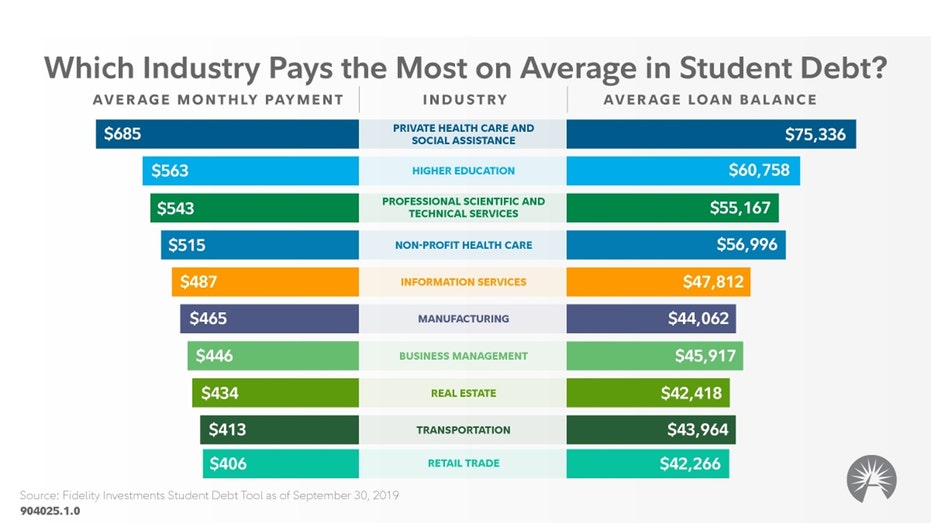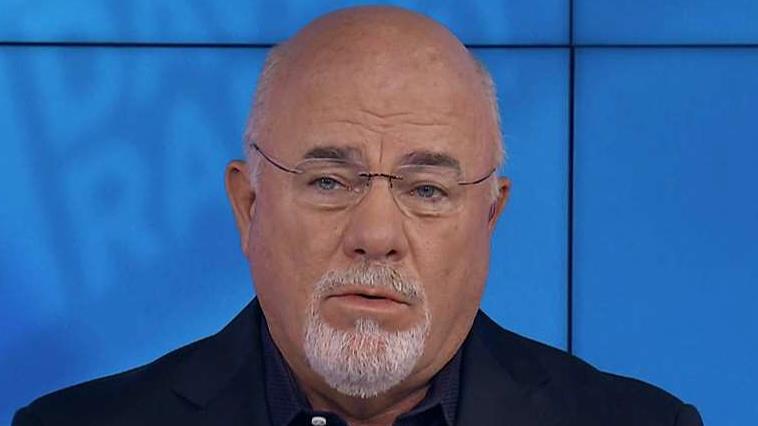Student debt: Who is paying the most?
December is quickly approaching, signifying the first time 2019 college graduates will begin paying back student loans, which may leave a devastating impact on their financial wellness.
As their six month grace period comes to a close, employees in some fields will be burdened with more student loan debt compared to fellow classmates, according to data from Fidelity Investments.
Employees in the private health care and social assistance industries are far and away burdened the most with student loan debt, the data revealed. Those employees face an average payment of $685 every month, far exceeding the second-highest monthly payments of $563 which employees in higher education face.
STUDENT LOAN DEBT FORGIVENESS COULD JUICE THE US ECONOMY, BUT CREATE POTENTIAL PROBLEMS, TOO
Paying the third-highest monthly payments of $543 are employees within professional scientific and technical services, the data revealed.

Graphic: Business Wire
The data is derived from nearly 30,000 users of Fidelity’s Student Debt Tool, which is part of Fidelity’s broader Student Debt Benefits program.
Since 2018, the program has focused on enabling borrowers to have a singular view of a variety of federal and private loan options by aggregating all of their student debt loans in one place, the company said.
TAXING COLLEGE ATHLETES' SCHOLARSHIPS? HOW IT COULD WORK
"Part of the solution is knowing where you stand, which is why Fidelity offers resources to help employees and employers work together to craft a path to action,” said Asha Srikantiah, head of Fidelity Investments’ student debt program.
As it stands now, Americans collectively owe nearly $1.5 trillion in student loans — more than twice the total a decade ago. It’s a burden that weighs on millions of adults, shaping their life choices and often stunting their financial growth. And as the study revealed, millennials aren't the only ones feeling the impact.
Student loan debt is not a problem isolated only to the young, although the majority of Student Debt Tool users who reported their debt are millennials, Fidelity said.
“By adopting a holistic approach, we are helping employers get in the trenches with employees to find ways to pay student debt off faster and hopefully, save money”
Baby boomers and Generation X (the generation between baby boomers and millennials) actually carry a higher average student debt loan burden, according to Fidelity.

Graphic: Business Wire
This debt is "causing them to delay life events such as buying a home, getting married, having children, and saving for retirement,” Srikantiah added.
GET FOX BUSINESS ON THE GO BY CLICKING HERE
However, a small but growing number of employers are stepping in to help with this salient and exhausting burden.
About 8 percent of employers offer student loan repayment assistance in 2019, according to the Society for Human Resource Management. That’s up from 4 percent in 2018 and 3 percent in 2015.
In early 2019, a bipartisan bill was introduced and, if passed, would allow employers to contribute up to $5,250 tax-free every year toward student debt repayment. Others are looking to the IRS for broader guidance on ways to contribute to student debt repayment in conjunction with their workplace retirement plan.
READ MORE ON FOX BUSINESS BY CLICKING HERE
The Associated Press contributed to this report.





















